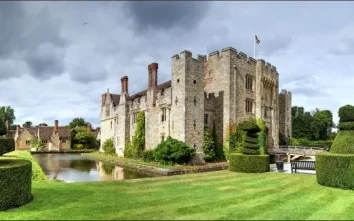Eton College Natural History Museum
Eton College Natural History Museum
- Entry:
- Free admission
- Facilities: Toilets
- City/Town:
- Windsor
Accessibility
- Region:
- the South East
- Postcode:
- SL4 6ES
- Museum Category:
- History
Official Website:
Eton College Natural History Museum
Eton College Natural History Museum is a museum located in Eton, England. The museum is part of Eton College, a famous independent school that has been in existence since the 15th century. The museum has a long history and has undergone several changes over the years.
The origins of the Eton College Natural History Museum can be traced back to the 18th century, when the school’s science curriculum began to expand. In 1789, the school established a natural history collection, which was housed in a small room in one of the school’s buildings. The collection mainly consisted of specimens of animals and plants, which were used for the study of natural history by the students.
During the 19th century, the collection continued to grow, and the school decided to build a dedicated museum to house the collection. The museum was built in 1875, and it was designed by the architect George Gilbert Scott. The museum was officially opened in 1884.
Over the years, the museum’s collection has continued to grow, and today it holds a wide variety of specimens, including fossils, rocks, minerals, and taxidermy specimens of animals. The museum also holds a library and archives, which contain a wealth of information about the history of natural history and the development of the museum.
A highlight of the museum is the Thackeray Collection of British Birds. The Hincks Herbarium is also a noteworthy attraction, containing over 4,000 dried pressed plants that were collected in the early 19th century. The Newall Collection of Birds’ Eggs, featuring over 1,400 eggs collected in the late 19th century, is also on display as a WW1 memorial. Additionally, the museum has a Kakapo, a now critically endangered nocturnal parrot from New Zealand, and an overstuffed Platypus widely known as our “Fattyplus”.
Today, the Eton College Natural History Museum is open to the public, and it is a popular destination for visitors interested in natural history and the history of the school. The museum continues to be used as an educational resource for the students of Eton College, and it remains an important part of the school’s science curriculum.







